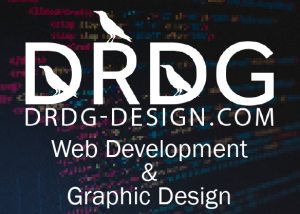Cryptocurrencies and blockchain technology have been around for over a decade, and they continue to make waves in the financial world. In this article, we will explore two of the most popular blockchain platforms, Cosmos and Ethereum, and compare their levels of innovation. We will look at their key features, development history, and potential for future growth. IF you are planning to trade Bitcoin, you may consider using a reliable trading Software.
Overview of Cosmos and Ethereum
Cosmos and Ethereum are both open-source blockchain platforms that allow developers to build decentralized applications (dApps) and issue their own cryptocurrencies. Ethereum was created in 2013 by Vitalik Buterin and has become the most widely used blockchain platform for dApp development. Cosmos, on the other hand, was launched in 2019 by Tendermint Inc. and has gained popularity for its interoperability features.
Key Features of Cosmos
Cosmos is a modular blockchain platform that allows different blockchains to communicate with each other using its Inter-Blockchain Communication (IBC) protocol. This means that developers can create customized blockchains and connect them to the Cosmos Hub, which acts as a central hub for all Cosmos-based chains. Cosmos also allows for easy cross-chain token transfers, making it easier for users to move their assets between different chains.
Another key feature of Cosmos is its Proof-of-Stake (PoS) consensus algorithm, which allows users to stake their tokens to become validators and earn rewards for validating transactions on the network. This incentivizes users to maintain the network’s security and stability while also earning rewards for doing so.
Key Features of Ethereum
When you buy ETH, on the other hand, it’s known for its ability to execute smart contracts, which are self-executing contracts that automatically enforce the terms of an agreement between parties. This has led to the development of numerous dApps on the Ethereum network, including decentralized exchanges (DEXs), non-fungible token (NFT) marketplaces, and decentralized finance (DeFi) protocols.
Ethereum also uses a PoS consensus algorithm, which is currently being rolled out as part of the Ethereum 2.0 upgrade. This upgrade aims to improve the network’s scalability, security, and energy efficiency while also introducing new features such as sharding and a new virtual machine.
Development History
Ethereum has a longer development history than Cosmos and has gone through several major upgrades over the years. These upgrades have introduced new features and improvements to the network, including the Byzantium and Constantinople hard forks, which introduced new opcodes and improved gas costs.
Cosmos, on the other hand, is still a relatively new platform and has only gone through one major upgrade so far, the Stargate upgrade, which introduced the IBC protocol and other improvements to the network’s performance and functionality.
Potential for Future Growth
Both Cosmos and Ethereum have strong potential for future growth, but they are targeting different use cases. Cosmos is focused on interoperability and aims to become the “Internet of Blockchains,” allowing different chains to communicate with each other seamlessly. This could lead to the development of new use cases for blockchain technology and attract more users and developers to the platform.
Ethereum, on the other hand, is already the most widely used blockchain platform for dApp development and has a strong ecosystem of developers, users, and projects. The Ethereum 2.0 upgrade is expected to improve the network’s scalability and performance, making it more attractive to developers who need a high-performance blockchain platform for their dApps.
Conclusion
In conclusion, both Cosmos and Ethereum are innovative blockchain platforms that offer unique features and benefits to users and developers. Cosmos is focused on interoperability and customization, while Ethereum is known for its smart contract capabilities and strong developer ecosystem. Ultimately, the choice between these two platforms depends on the specific use case and requirements of the project or application. Developers should consider the strengths and weaknesses of each platform before choosing which one to use.































